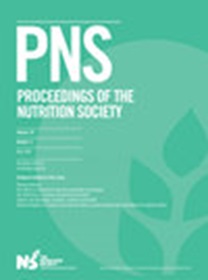评估沙特阿拉伯王国在 COVID-19 大流行期间在营养学实践中使用远程保健的情况
IF 4.5
2区 医学
Q1 NUTRITION & DIETETICS
引用次数: 0
摘要
远程保健涉及通过虚拟技术远程提供医疗保健服务,已被证明具有降低住院率和缩短患者住院时间等益处(1,2)。COVID-19 在全球的流行大大加速了临床营养学家对远程医疗的采用。例如,在美国,临床营养师使用远程保健进行营养护理的比例已从 37% 上升到 78%(3),而在意大利,注册营养师 (RDN) 使用远程营养服务的比例已从 16% 上升到 63%(4)。这些统计数据凸显了远程保健与营养学实践的快速融合,以应对全球健康危机,反映了虚拟保健服务作为提供营养保健的有效方法的发展趋势。虽然远程医疗在沙特阿拉伯取得了进展(5),但在营养学实践中的普及率和有效性方面还存在研究空白。本研究旨在评估 COVID-19 大流行期间远程医疗在沙特阿拉伯营养学实践中的当前实施情况。在这项横断面研究中,从 2022 年 12 月中旬到 2023 年 5 月中旬采用了基于网络的在线调查。这项研究分布在沙特阿拉伯的多个地区(中部、西部、东部、南部和北部),由符合研究纳入标准的 306 名公共和私营医疗机构的临床注册营养师(RDN)完成。调查包括 28 个问题,分为四个部分,涵盖社会人口信息、过去或当前的经验、使用远程保健的障碍和挑战以及远程保健的未来前景。在这项研究中,参与者被要求反思他们目前在营养学领域使用远程保健的观察结果和以往经验。为了确保调查的有效性和相关性,我们在收集数据之前,由沙特阿拉伯经验丰富的营养师组成的小组对调查进行了审查,以获得他们的反馈意见。营养师在使用远程保健时遇到的最常见障碍包括互联网连接问题(21.9%)、患者不参与和缺乏热情(21.3%)以及与患者协调方面的困难(21%)。营养营养师使用的远程保健干预措施主要涉及饮食回忆(33.7%)、体重相关测量(30.6%)、实验室检查结果(26%),只有 8%的营养营养师报告使用远程保健测量生命体征。大多数参与者(69.4%)认为,远程保健可以提高患者的可及性,并有助于降低缺席率(68.9%)。此外,超过 70% 的参与者认为,远程保健为他们提供了住院会诊的灵活性。总之,远程保健在沙特阿拉伯的康复护士中得到广泛应用,并具有降低缺席率等潜在益处。要想更好地了解远程医疗在沙特阿拉伯营养师中的使用情况,还需要开展进一步的研究。本文章由计算机程序翻译,如有差异,请以英文原文为准。
Evaluation of the use of telehealth in Dietetics’ practice during the COVID-19 pandemic in the Kingdom of Saudi Arabia
Telehealth, which involves the remote delivery of healthcare services through virtual technologies, has been shown to have benefits such as reducing hospitalisations and length of stay for patients (1,2) . The global COVID-19 pandemic has greatly accelerated the adoption of telehealth among clinical nutritionists. For instance, in the USA, telehealth usage for nutritional care has increased from 37% to 78% among clinical nutritionists (3) , while in Italy, the adoption of telenutrition services by Registered Dieticians (RDNs) has risen from 16% to 63% (4) . These statistics highlight the rapid integration of telehealth into dietetics practices as a response to the global health crisis, reflecting a growing trend towards virtual care delivery as an effective method for providing nutritional care. While telehealth has made progress in Saudi Arabia (5), there is a research gap regarding its prevalence and effectiveness in dietetics practice. This study aims to evaluate the current implementation of telehealth in dietetics practice during the COVID-19 pandemic in Saudi Arabia.In this cross-sectional, a web-based online survey was used from mid-December 2022 to mid-May 2023. The study was distributed in several Saudi Arabian regions including (central, western, eastern, south, and north) and was completed by 306 clinical Registered Dietitians (RDNs) in public and private healthcare facilities who met the study’s inclusion criteria. The survey consisted of 28 questions divided into four sections, covering sociodemographic information, past or current experiences, obstacles and challenges of telehealth usage, and the future prospects of telehealth. In this study, participants were requested to reflect on their current observations and previous experiences pertaining to the utilisation of telehealth in the field of dietetics. To ensure the validity and relevance of the survey, it was reviewed by a panel of experienced dietitians in Saudi Arabia to obtain their feedback before being used to collect data.Our research findings reveal that 76% of RDNs in Saudi Arabia utilize telehealth in their practice. The most common obstacles reported by RDNs using telehealth include internet connectivity issues (21.9%), patient disengagement and lack of enthusiasm (21.3%), and difficulties in coordinating with patients (21%). Telehealth interventions used by RDNs primarily involve diet recall (33.7%), weight- related measurements (30.6%), lab findings (26%), and only 8% reported using telehealth for vital signs. A majority of participants (69.4%) believed that telehealth could improve patient accessibility and help reduce no-show rates (68.9%). Additionally, over 70% of participants agreed that telehealth offers them flexibility in inpatient consultations.In conclusion, telehealth is widely utilised among RDNs in Saudi Arabia, with potential benefits such as decreased no-show rates. Further research is needed to gain a better understanding of telehealth usage among RDNs in Saudi Arabia.
求助全文
通过发布文献求助,成功后即可免费获取论文全文。
去求助
来源期刊
CiteScore
15.50
自引率
0.00%
发文量
190
审稿时长
6-12 weeks
期刊介绍:
Proceedings of the Nutrition Society publishes papers and abstracts presented by members and invited speakers at the scientific meetings of The Nutrition Society. The journal provides an invaluable record of the scientific research currently being undertaken, contributing to ''the scientific study of nutrition and its application to the maintenance of human and animal health.'' The journal is of interest to academics, researchers and clinical practice workers in both human and animal nutrition and related fields.

 求助内容:
求助内容: 应助结果提醒方式:
应助结果提醒方式:


